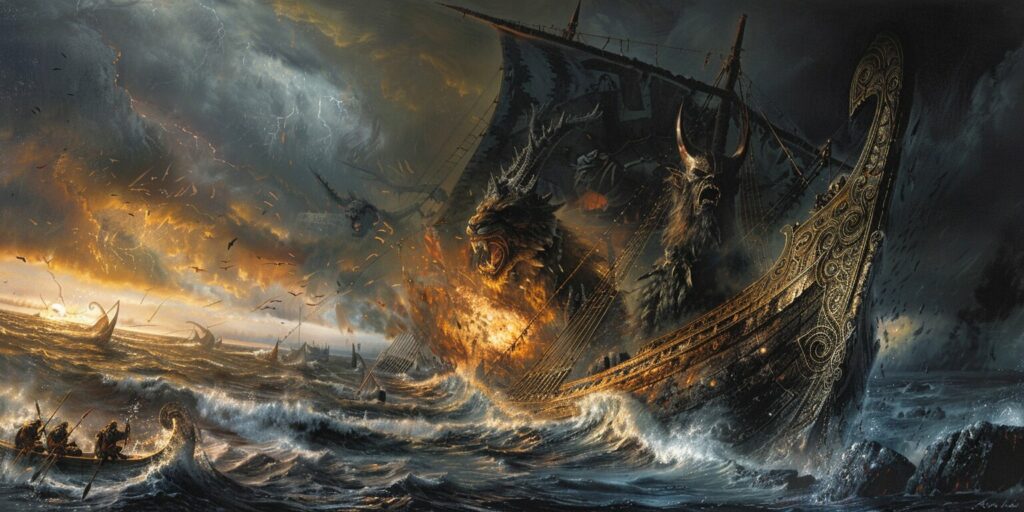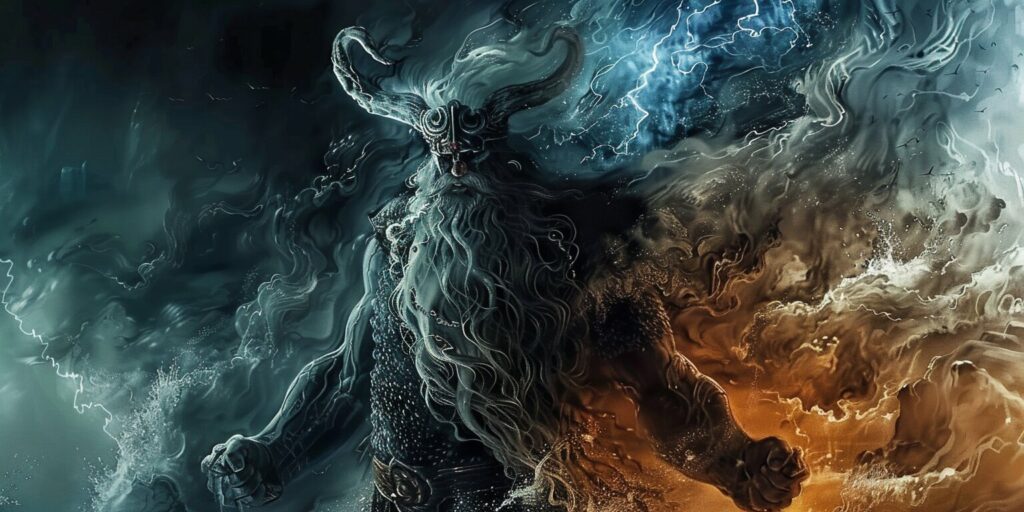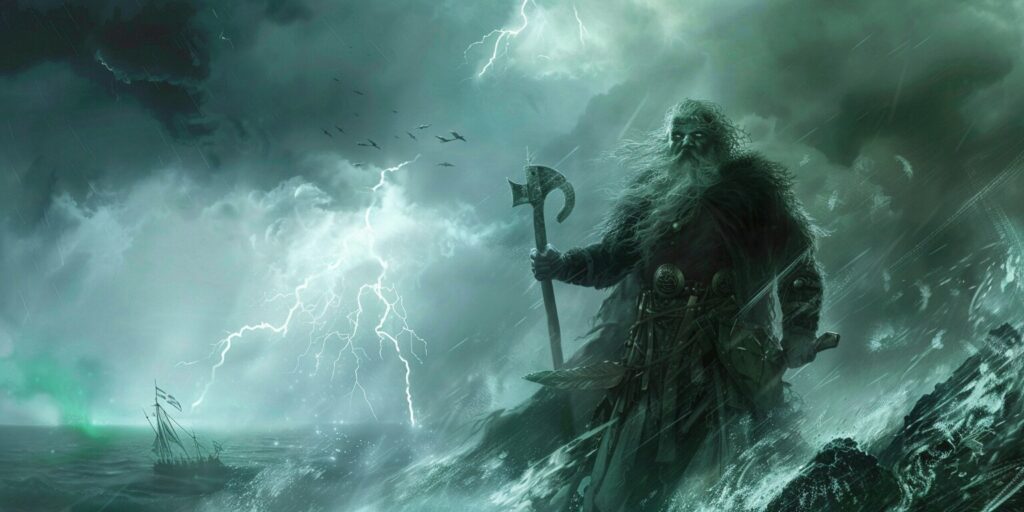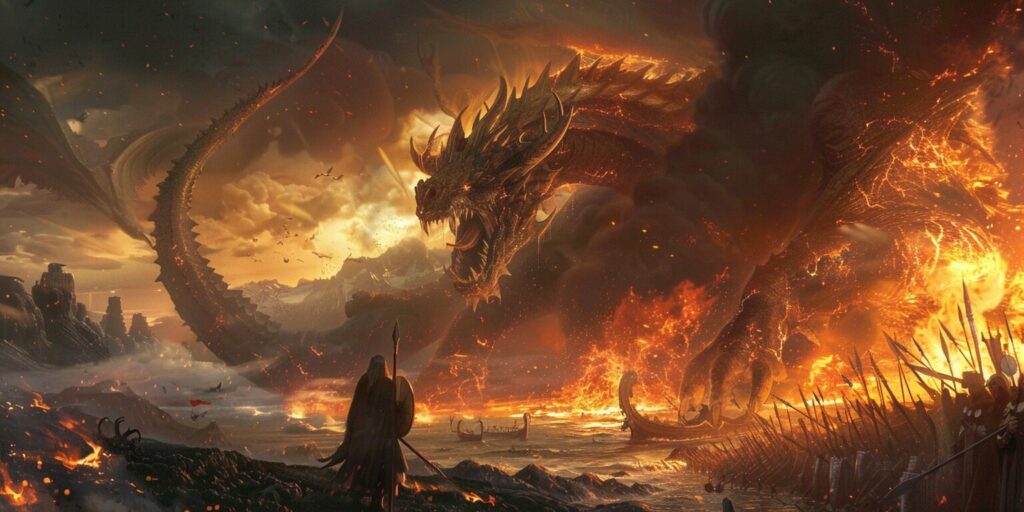Aesir Gods, Baldur, Freyr, Hodr, Loki, Magni, Norse Gods, Norse Mythology, Odin, Ragnarok, Tales of the Gods, Thor, Tyr, Vali, Vidar
After the Apocalypse: Who Survives Ragnarok in Norse Mythology?
In Norse mythology, Ragnarok is a prophesied cataclysmic event that signifies the end of the world and the subsequent creation of a new one. This epic battle between the forces of destruction and the gods has captivated readers for centuries. In this article, we will delve into Ragnarok’s intricacies and explore the Norse gods’ fate, uncovering who manages to endure the apocalyptic aftermath.
The prophecy of Ragnarok holds a significant role in shaping the events that transpire during this final battle. It provides a glimpse into the chaos and havoc that will engulf the world. Through an in-depth examination of who survives Ragnarok in Norse mythology, we aim to shed light on the factors that determine which gods survive the impending doom.
The Prophecy of Ragnarok
In Norse mythology, the looming threat of Ragnarok’s prophecy casts a shadow over the world. This ancient Nordic apocalypse, often referred to as the end-of-the-world prophecy, foretells the impending doom that will unleash chaos and destruction across the realms.
According to the prophecy, a series of catastrophic events, known as Ragnarok, will unfold during the final battle. Giants will rise, Jormungandr, the mighty serpent, will break free from its eternal slumber, and the gods themselves will be drawn into a fierce cosmic conflict.
As the forces of darkness gather, Ragnarok’s prophecy weaves a tale of immense turmoil and ultimate devastation. This apocalyptic event signifies the end of one world and the emergence of a new era shrouded in uncertainty.

The Significance of Ragnarok Prophecy
The prophecy of Ragnarok serves as a cautionary tale, warning of the impending end that awaits both gods and mortals. It emphasizes the cyclical nature of existence, reminding all beings of their impermanence and the consequences of their actions.
Additionally, the prophecy brings to light the interconnectedness of the Norse pantheon and their destinies. It reveals the intricate web of alliances and rivalries among the gods, setting the stage for monumental battles and the ultimate test of their power.
The Fate of the Gods: Survivors and Heroes
Within the prophecy lies a glimmer of hope amidst the darkness. While many gods will fall in Ragnarok’s chaos, some will defy the odds and survive the Nordic apocalypse.
Among the survivors, figures such as Thor, Odin, and Freyja stand as symbols of strength and resilience, epitomizing the indomitable spirit of the gods. Their survival and triumph in the face of overwhelming destruction hold significant meaning in the mythological narrative.
As we explore the prophecy in more detail, we will uncover the key elements that contribute to its significance and shed light on the gods’ fate. Join us as we delve into the intricacies of the Ragnarok prophecy and the mysteries it holds.
The Forces of Destruction: Who Kills Who in Ragnarok
Ragnarok, the final battle in Norse mythology, is a cataclysmic event that brings together an array of characters. The gods and other mythical beings engage in a battle of epic proportions, where conflicts and rivalries come to a head. In this ultimate showdown, the fate of these characters hangs in the balance as they fight for their survival and the survival of the world.
The cast of characters in Ragnarok is vast and varied, each with unique strengths, abilities, and stories. As the battle unfolds, alliances are formed and broken, and the true nature of each character is revealed.
Some of the most prominent gods in the final battle include Odin, Thor, Loki, and Fenrir. Odin, the All-Father and ruler of the gods, fights valiantly but ultimately meets his demise at the hands of the monstrous wolf, Fenrir. Thor, the fierce god of thunder, battles the World Serpent, Jormungandr, in an epic clash that ends in both their deaths.
Key Characters and Their Fates:
- Odin: Killed by Fenrir, the monstrous wolf
- Thor: Slain by Jormungandr, the World Serpent
- Loki: Engages in a fierce battle with Heimdall, resulting in mutual destruction
- Freyr: Defeated by the fire giant Surtr, who wields a flaming sword
- Tyr: Falls in combat against Garm, the hellhound
These are just a few examples of the intense clashes that occur during Ragnarok. The battle is a chaotic whirlwind of violence, with gods and mythical beings facing off against each other in a fight for survival and dominance.
While some gods meet their demise in the apocalyptic battle, others manage to emerge victorious. Their stories and the impact they have on the outcome of Ragnarok will be explored in the subsequent sections, shedding light on the survivors and their roles in shaping the aftermath of the final battle.
The Survivors: Which Gods Defy the End
In the cataclysmic event of Ragnarok, where chaos and destruction reign supreme, there are Norse gods who manage to defy the end and emerge as survivors. These resilient deities play a vital role in shaping the aftermath of Ragnarok and contribute to the continuation of the mythological saga. If you have ever wondered how many gods survive Ragnarok, you are in the right place.
Vidar and Vali: The Vengeance Seekers
As the dust settles after the catastrophic battle of Ragnarok, two powerful gods emerge as the vanguards of vengeance. Vidar and Vali, among the survivors of the apocalyptic event, step forward to seek retribution for the destruction that unfolded.
Vidar, known for his immense strength and resilience, is the son of Odin and the giantess Grid. With his unyielding determination and unwavering resolve, Vidar embodies the spirit of revenge. Legend has it that he wears a special shoe made from pieces of discarded leather, allowing him to deliver a fatal blow to the ferocious wolf, Fenrir, who plays a significant role in the events leading up to Ragnarok. Vidar’s act of vengeance represents the triumph of justice over chaos.

Vali, on the other hand, is the son of Odin and the giantess Rind. Born solely to avenge Balder’s death, Vali embodies the unwavering commitment to justice and retribution. In the aftermath of Ragnarok, Vali ensures that the sacrifices made during the battle do not go in vain and that those responsible for the devastation face the consequences of their actions.
Together, Vidar and Vali exemplify the indomitable spirit of the Norse gods. Their pursuit of vengeance and the balance they restore to the world after Ragnarok reinforce the eternal cycle of creation and destruction in Norse mythology. Their stories provide us with a deeper understanding of the intricate web of relationships and motivations that shape the mythological narrative.
The Roles of Vidar and Vali in the Rebirth of the World
Vidar and Vali’s contributions extend beyond their thirst for revenge. They play crucial roles in the rebirth of the world, ensuring that the aftermath of Ragnarok sets the stage for a new era.
- Vidar’s Restraint: While his main role is avenging his fallen comrades, Vidar also symbolizes restraint and wisdom. His measured approach to justice prevents him from rushing into hasty decisions, ensuring that the world is rebuilt upon a strong and stable foundation.
- Vali’s Renewal: Vali, with his determination to avenge Balder’s death, also embodies the concept of renewal and rebirth. His relentless pursuit of justice ensures that the gods who survived Ragnarok have the opportunity to shape a better future for themselves and future generations.
The tales of Vidar and Vali guide us through the intricate tapestry of Norse mythology, offering insights into the enduring themes of justice, revenge, and renewal. As we navigate the aftermath of Ragnarok alongside these vengeance seekers, we gain a deeper appreciation for the resilience and indomitable spirit that define the Norse gods.
Balder, Hodr, Modi, and Magni: The Reborn Gods
While Ragnarok may end the world for many gods in Norse mythology, it also paves the way for new beginnings. Balder, Hodr, Modi, and Magni are among the deities who experience a rebirth, rising from the ashes of the cataclysm to embrace their renewed existence in the post-Ragnarok era.
Balder, known for his beauty and purity, is resurrected after meeting a tragic fate during the events leading up to Ragnarok. His return signifies the restoration of light and goodness, as he brings hope and peace to the newly-formed world.
Hodr, the blind god who unknowingly causes Balder’s demise, also gets a chance at redemption. In his rebirth, Hodr becomes a symbol of transformation, learning from his past mistakes and embracing a new purpose in the aftermath of Ragnarok.
Modi, the son of Thor and a fierce warrior, showcases the resilience and strength of the gods after the great battle. His rebirth embodies the spirit of survival as he emerges ready to face new challenges and protect the realms against future threats.

Magni, another son of Thor, inherits his father’s mighty prowess and becomes a force to be reckoned with in the reborn world. His strength and vitality contribute to rebuilding, ensuring that the post-Ragnarok era thrives with renewed vigor.
The Impact of the Reborn Gods
The resurrection of Balder, Hodr, Modi, and Magni profoundly impacts the post-Ragnarok era. Their transformations and renewed presence shape the course of mythological events, offering guidance, protection, and hope to both gods and mortals alike.
- Balder serves as a beacon of light, inspiring love and harmonious relationships among the gods and humans.
- Hodr’s journey of redemption and self-discovery becomes a powerful lesson in personal growth and forgiveness.
- Modi is the guardian of Asgard, defending the realms against potential threats and ensuring the stability of the new world.
- Magni embodies the strength and resilience necessary to rebuild and revitalize the realms, leading the way toward a brighter future.
Together, these reborn gods contribute to the flourishing of the post-Ragnarok era, symbolizing the enduring spirit and endless possibilities that arise from the ashes of destruction.
Conclusion
After delving into the prophecy, the battles, and the surviving gods of Ragnarok, we have better understood who defies the end in Norse mythology. The world may undergo a devastating apocalypse, but the resilience of certain deities ensures the continuation of the mythological saga.
Throughout the epic battles of Ragnarok, the surviving gods exhibit immense strength, determination, and perseverance. As the dust settles and the new world emerges, they play vital roles in shaping the post-apocalyptic era.
The stories of Vidar, Vali, Balder, Hodr, Modi, and Magni showcase the endless possibilities of rebirth and transformation, even in the face of overwhelming destruction. In their tales, we find hope and inspiration, reminding us that life can emerge from the darkest of times.

